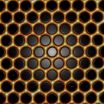(Press-News.org) There was a lot of excitement a few years ago following the discovery of the DNA origami technique. The approach could be used to build nanoparticles of a given shape and size. However, real applications, such as nano-tweezers, remained out of reach. An international team of researchers led by Professor Tim Liedl of the Ludwig-Maximillians-Universitaet Muenchen and Professor Friedrich Simmel of the Technische Universitaet Muenchen have now succeeded in building nanoparticles using optically active DNA building blocks that can be used to modify light in very specific ways.
Coupling light and nanostructures may help significantly reduce the size of optical sensors for medical and environmental applications, while at the same time making them more sensitive. However, the size of a light wave stretching out over 400 to 800 nanometers is gigantic in comparison to nanostructures of only a few nanometers. Yet in theory, when tiniest structures work together in very specific ways, even small objects can interact very well with light. Unfortunately it is not possible to produce the requisite three-dimensional structures with nano-scale precision in sufficient quantities and purity using conventional methods.
"With DNA origami, we have now found a methodology that fulfills all of these requirements. It makes it possible to define in advance and with nanometer precision the three-dimensional shape of the object being created," says Professor Friedrich Simmel, who holds the Chair for Biomolecular Systems and Bionanotechnology at the TU Muenchen. Programmed solely using the sequence of basic building blocks, the nano-elements fold themselves into the desired structures." Friedrich Simmel's team successfully built nano spiral staircases 57 nanometers high and 34 nanometers in diameter with 10 nanometer gold particles attached at regular intervals.
On the surface of the gold particles the electrons react with the electromagnetic field of the light. The small clearance between the particles ensures that the gold particles of a DNA strand work in unison, thereby amplifying the interactions many fold. Professor Alexander O. Govorov, theoretical physicist at the Ohio State University in Athens, USA, had predicted that the effect should depend on the spacing, size and composition of the metal particles. Using the DNA origami method, the Munich physicists built up nanostructures in which they varied these parameters.
The results of these experiments confirm the predictions of their colleagues in every regard: Aqueous solutions of right-handed and left-handed nano spiral staircases differ visibly in their interactions with circular polarized light. Spiral staircases with large particles show a significantly stronger optical response than those with small particles. The chemical composition of the particles also had a large effect: When the gold particles were coated with a layer of silver, the optical resonance shifted from the red to the shorter wave blue domain.
By combining theoretical calculations and the possibilities of DNA origami, the researchers are now able to produce nano-optical materials with precisely specified characteristics. Professor Tim Liedl describes the path the research might follow: "We will now investigate whether we can use this method to influence the refraction index of the materials we manufacture. Materials with a negative refractive index could be used to develop novel optical lens systems – so-called super lenses."
INFORMATION:
This work was funded by the Volkswagen Foundation, the DFG Cluster of Excellence Nanosystems Initiative Munich (NIM) and the National Science Foundation (NSF, USA).
Nano spiral staircases modify light
Tailored optical material from DNA:
2012-03-15
ELSE PRESS RELEASES FROM THIS DATE:
Stanford scientists discover drug side effects, interactions using new computer algorithm
2012-03-15
STANFORD, Calif. -- A week ago, you started a new prescription medication for acne. Today, you feel dizzy and short of breath and have difficulty concentrating. Your symptoms are not listed in the package insert as possible side effects of the drug, but why else would you be feeling so odd?
Unfortunately, there's no easy answer. Clinical trials are designed to show that a drug is safe and effective. But even the largest trials can't identify irksome or even dangerous side effects experienced by only a tiny proportion of those people taking the drug. They also aren't designed ...
Molecular graphene heralds new era of 'designer electrons'
2012-03-15
Menlo Park, Calif. — Researchers from Stanford University and the U.S. Department of Energy's SLAC National Accelerator Laboratory have created the first-ever system of "designer electrons" – exotic variants of ordinary electrons with tunable properties that may ultimately lead to new types of materials and devices.
"The behavior of electrons in materials is at the heart of essentially all of today's technologies," said Hari Manoharan, associate professor of physics at Stanford and a member of SLAC's Stanford Institute for Materials and Energy Sciences, who led the research. ...
Many Jobless Turning to Social Security When Unemployment Ends
2012-03-15
Families throughout the nation continue to struggle financially. In fact, the prospect of economic stability continues to look so grim professionals have coined this period of time the Great Recession. Many depend on unemployment benefits to make ends meet during these difficult times, but what happens when they run out?
Now, more and more people are looking to Social Security Disability benefits when their unemployment ends. Whether people were disabled before their unemployment began or became disabled while receiving unemployment, Social Security Disability offers ...
Collaborative preclinical efficacy studies suggest a new target for drug addiction treatment
2012-03-15
In preclinical studies, researchers at SRI International and Astraea Therapeutics have recently evaluated the role of a new drug receptor target that shows promise for the treatment of drug addiction.
This potential new drug target belongs to a class of receptors called the nicotinic acetylcholine receptors (nAChRs). One subtype of nAChRs, called alpha4beta2 is a well-known target for nicotine's addictive effects and the therapeutic effect of the smoking cessation drug varenicline. SRI researchers are now studying another, lesser-known subtype, called alpha3beta4 nAChR, ...
What to Do When Nursing Home Neglect Leads to Dangerous Dehydration
2012-03-15
Dehydration is one of the most common forms of nursing home neglect. The risk of dehydration is particularly acute in patients who suffer from health problems that render them incapable of properly communicating their needs.
Nursing home dehydration can happen for a number of different reasons. Some patients aren't physically able to drink from a glass, either because they have difficulty swallowing or because they are unable to sit upright. In other cases, patients with cognitive or emotional difficulties may refuse certain beverages. In the worst cases the neglect ...
More than half of Americans doubt US global leadership in 2020
2012-03-15
WASHINGTON—March 14, 2012—More than half of likely voters doubt that the United States will be the No. 1 world leader in science, technology and health care by the year 2020, according to a new national public opinion poll commissioned by Research!America. The findings reveal deep concerns among Americans about the country's ability to maintain its world-class status in innovation, research and development before the next decade.
"A lackluster investment in science and innovation is driving fears among Americans about our world dominance in the years ahead," said Research!America ...
Study demonstrates cells can acquire new functions through transcriptional regulatory network
2012-03-15
Researchers at the RIKEN Omics Science Center (OSC) have successfully developed and demonstrated a new experimental technique for producing cells with specific functions through the artificial reconstruction of transcriptional regulatory networks. As an alternative to induced pluripotent stem cells, the technique promises to enable faster and more efficient production of functional cells for use in cancer therapy and a variety of other areas.
Starting with the first-ever production of induced pluripotent stem cells (iPS cells) in 2006, cell reprogramming - the genetic ...
Genome-wide study reveals how key immune sensors arrive at the front lines of infection
2012-03-15
LA JOLLA, Calif., March 14, 2012 – In a healthy immune system, invading pathogens trigger a cascade of alerts and responses to fight off the infection. Sensors called toll-like receptors, or TLRs, act as one of the first lines of defense. Two of these sensors, known as TLR7 and TLR9, specifically recognize and respond to microbial RNA and DNA, respectively. But what determines how these TLRs get where they need to be and sound the alarm for pathogen infection? To answer this question, a team led by Sumit Chanda, Ph.D. and colleagues at Sanford-Burnham Medical Research Institute ...
Breakthroughs in Chikungunya research from A*STAR spell new hope for better treatment and protection
2012-03-15
Recent breakthroughs in Chikungunya research spearheaded by scientists at A*STAR's Singapore Immunology Network (SIgN) have made great strides in the battle against the infectious disease. Working in close collaborations with Singapore clinician-scientists and international researchers , Dr Lisa Ng, Principal Investigator of the Chikungunya research group at SIgN, led the team to discover a direct biomarker which serves as an early and accurate prognosis of patients who have a higher risk of the more severe form of Chikungunya fever (CHIKF). This means that doctors can ...
Texas Paternity Fraud: I'm Not the Father So Why the Child Support?
2012-03-15
What if a man has been named the father of a child, but has to pay child support because he missed court or was misled into signing a paternity statement without a DNA test? Although the Texas Family Code covers a wide range of legal issues from divorce, child custody and spousal support to modifications of custody and visitation because of parental relocation, one Texas paternity provision was recently changed regarding the need to correct paternity mistakes with DNA testing.
Prior to the passage of Texas Senate Bill 785, a man could only request a paternity test prior ...
LAST 30 PRESS RELEASES:
Tracing the quick synthesis of an industrially important catalyst
New software sheds light on cancer’s hidden genetic networks
UT Health San Antonio awarded $3 million in CPRIT grants to bolster cancer research and prevention efforts in South Texas
Third symposium spotlights global challenge of new contaminants in China’s fight against pollution
From straw to soil harmony: International team reveals how biochar supercharges carbon-smart farming
Myeloma: How AI is redrawing the map of cancer care
Manhattan E. Charurat, Ph.D., MHS invested as the Homer and Martha Gudelsky Distinguished Professor in Medicine at the University of Maryland School of Medicine
Insilico Medicine’s Pharma.AI Q4 Winter Launch Recap: Revolutionizing drug discovery with cutting-edge AI innovations, accelerating the path to pharmaceutical superintelligence
Nanoplastics have diet-dependent impacts on digestive system health
Brain neuron death occurs throughout life and increases with age, a natural human protein drug may halt neuron death in Alzheimer’s disease
SPIE and CLP announce the recipients of the 2025 Advanced Photonics Young Innovator Award
Lessons from the Caldor Fire’s Christmas Valley ‘Miracle’
Ant societies rose by trading individual protection for collective power
Research reveals how ancient viral DNA shapes early embryonic development
A molecular gatekeeper that controls protein synthesis
New ‘cloaking device’ concept to shield sensitive tech from magnetic fields
Researchers show impact of mountain building and climate change on alpine biodiversity
Study models the transition from Neanderthals to modern humans in Europe
University of Phoenix College of Doctoral Studies releases white paper on AI-driven skilling to reduce burnout and restore worker autonomy
AIs fail at the game of visual “telephone”
The levers for a sustainable food system
Potential changes in US homelessness by ending federal support for housing first programs
Vulnerability of large language models to prompt injection when providing medical advice
Researchers develop new system for high-energy-density, long-life, multi-electron transfer bromine-based flow batteries
Ending federal support for housing first programs could increase U.S. homelessness by 5% in one year, new JAMA study finds
New research uncovers molecular ‘safety switch’ shielding cancers from immune attack
Bacteria resisting viral infection can still sink carbon to ocean floor
Younger biological age may increase depression risk in older women during COVID-19
Bharat Innovates 2026 National Basecamp Showcases India’s Most Promising Deep-Tech Ventures
Here’s what determines whether your income level rises or falls
[Press-News.org] Nano spiral staircases modify lightTailored optical material from DNA:


